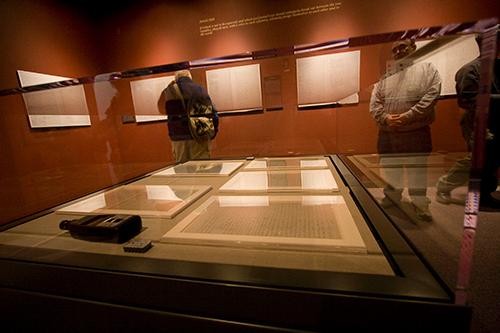Portions of the Treaty of Guadalupe Hidalgo will be on display at the Arizona State Museum in February for its 163 anniversary.
Feb. 2, 1848 marks the day the treaty was signed, formally ending the Mexican-American War and ceding a vast amount of land to the United States, of what is now Arizona, Nevada, New Mexico, Utah and California.
The treaty also caused people living in the territory to renounce their Mexican citizenship and begin the process of naturalization into the United States.
Michael Brescia, associate curator of ethnohistory at the Arizona State Museum, said the treaty is significant and valid today because descendants of Mexicans living in the purchased territory are still fighting to collect rights promised to them in the treaty.
According to Oscar Martinez, a UA history professor, when Mexico refused to let the United States purchase the land, the U.S. essentially provoked the Mexican-American war to acquire the land by force in 1846.
The payment was compensation to Mexico for damages and the lost territories, Martinez said.
The treaty cost $18 million, according to Martinez, and in addition to the $15 million paid to Mexico for the territories, $3 million went to U.S. citizens who had claims against Mexico for enduring losses.
The U.S. also agreed to compensate their new citizens in the territory for their claims against Mexico.
However, the expense of the territories is insignificant when regarding the value the U.S. has acquired with the land.
California and Texas yielded a “”huge amount of good land,”” said Martinez, referring to the amount of minerals found in the territories, grazing land and especially the “”great”” trading ports, particularly the port in the San Francisco Bay area. France, Britain and other nations desired the port because it was a direct trade route with Asia.
When asked about what effect the Treaty of Guadalupe Hidalgo had on the people residing in the territories, Martinez said it “”deserves a separate story.””
Articles VIII and IX of the treaty guaranteed property, freedom of religion and citizenship for those who wished to stay within the territory.
Some people left their land and returned to Mexico but the majority stayed, Brescia said.
However, according to Martinez, there were gross violations of the guarantees, and the people “”became foreigners in their own land.”” They also suffered from racial and religious discrimination.
Articles V, VIII, IX, X and XII of the treaty will be on display until Feb. 28.
The National Archives in Washington, D.C., houses the complete treaty in both English and Spanish.









